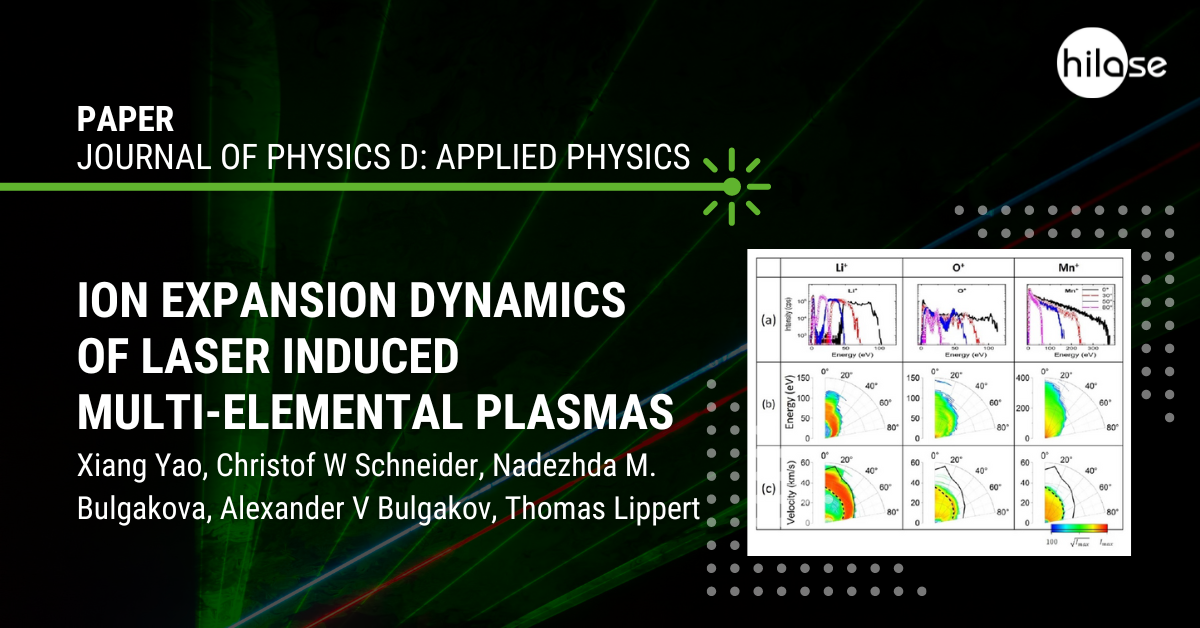Nadezhda Bulgakova (head of Scientific Laser Applications at HiLASE Centre) and Alexander V. Bulgakov (team leader of Nanomaterials) are the co-authors of a new paper published in the Journal of Physics D: Applied Physics.
The article titled Ion expansion dynamics of laser induced multi-elemental plasmas was written in collaboration with researchers from Paul Scherrer Institut and ETH Zürich: Xiang Yao, Christof W. Schneider, and Thomas Lippert.

Ablation of multi-elemental materials by nanosecond lasers is often used to deposit oxide thin films. Understanding the ablation plume dynamics is of utmost importance to gain a detailed insight into thin film growth of materials with a complex composition. In this study, the plume expansion dynamics of several compound materials (AuCu, La0.33Ca0.67MnO3, and LiMn2O4) were characterized by measuring the angular-dependent kinetic energy (KE) distributions of ionic plasma species produced by KrF- and XeCl-excimer laser ablation in vacuum. The distributions of the lightest plume ions were found to differ fundamentally from those of other ions. The latter are similar to the energy distributions observed in single-component plumes and represent a low-energy peak and high-energy tail, while those for the lightest ions consist of at least two distinct peaks. These observations can be explained by assuming the formation of a dynamic double layer (DL) at the front of the plasma giving rise to different acceleration rates for light and heavier ions. As a consequence, heavier elements stay longer within the dynamic DL and gain larger KEs that leads to the observed ion separation. Extending these considerations into three dimensions yields an anisotropic acceleration concept for the plasma ions with high acceleration rates and longer presence within the DL normal to the target surface and lower acceleration rates and shorter time in the parallel direction.








